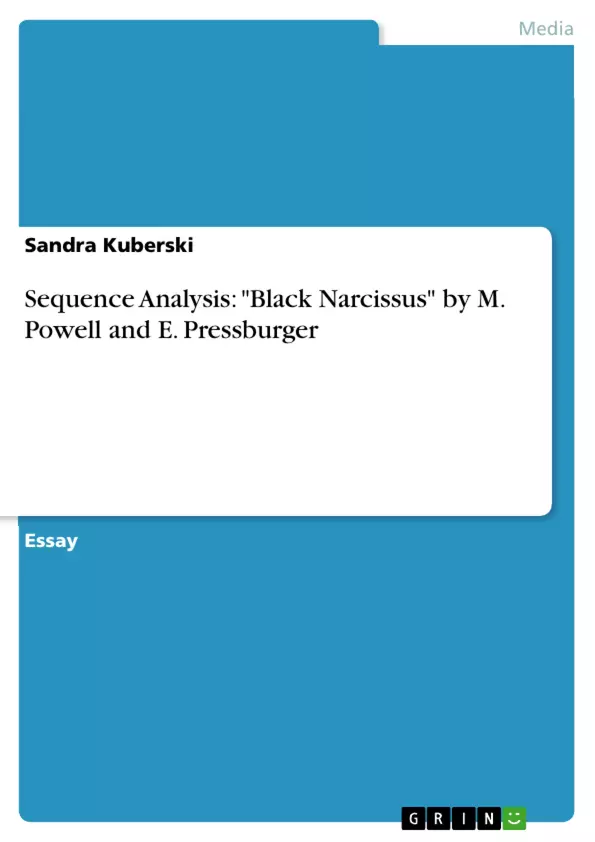“The Black Narcissus” is a British film from 1974, directed by Michael Powell and Emeric Pressburger and based on the same-named novel by Rumer Godden. The aim of this essay is a detailed analysis of a sequence close to the end of the film. It consists of roughly five scenes: the first scene shows natives drumming in the jungle. In the next scene the spectator is transferred to the hallways of the Convent, where Sister Clodagh (Deborah Kerr) searches for Sister Ruth (Kathleen Byron). The third scene shows the occurrences between those two in Sister Ruth’s room and her final flight, the fourth is composed of the search of the nuns for Sister Ruth and the sequence has its climax when Sister Ruth visits Mr. Dean, confesses her love and in the end faints.
Furthermore it will be examined, how the cinematic techniques underline the main themes and to what extent film language mediates a sense of foreboding to the spectator. As a whole, the film deals with the fall of the British Empire, here represented through the failing missionary work of the nuns. The chosen sequence itself, however, deals with the consequences of the tantalising setting on the Sisters and their repressed sexuality which takes overhand. Most striking is thereby the juxtaposition of Clodagh and Ruth, who are shown as mirror images. Whilst the one overcomes the temptation, the other one falls for it and – when repulsed by Mr. Dean – in the end loses control and becomes insane.
Inhaltsverzeichnis (Table of Contents)
- Sequence Analysis: Black Narcissus
- Introduction
- Setting
- Lighting and Color
- Conclusion
Zielsetzung und Themenschwerpunkte (Objectives and Key Themes)
This essay analyzes a sequence from the film "Black Narcissus," examining how cinematic techniques contribute to the film's main themes and create a sense of foreboding for the viewer. The sequence focuses on the impact of the exotic setting on the repressed sexuality of the nuns, particularly the contrasting characters of Sister Clodagh and Sister Ruth.
- The influence of the exotic setting on the characters' repressed sexuality
- The juxtaposition of Sister Clodagh and Sister Ruth as mirror images
- The role of cinematic techniques, including lighting, color, and camera movement, in creating mood and foreshadowing
- The relationship between the film's setting and the themes of colonialism and the fall of the British Empire
- The use of symbolism and visual motifs to convey the film's themes
Zusammenfassung der Kapitel (Chapter Summaries)
- Introduction: This section introduces the film "Black Narcissus" and the specific sequence that will be analyzed in the essay. It also briefly outlines the themes of the film and the chosen sequence.
- Setting: This chapter explores the setting of the film, focusing on the contrast between the wilderness of the jungle and the seemingly organized civilization of the convent. The chapter discusses how the setting is a metaphor for the clash between nature and culture and how it contributes to the film's themes of eroticism and exoticism.
- Lighting and Color: This chapter examines the use of light and color in the film, particularly in the chosen sequence. The chapter discusses how the use of chiaroscuro creates a sense of foreboding and how color symbolism plays a role in the film's overall message.
Schlüsselwörter (Keywords)
The main keywords of this essay include "Black Narcissus," "sequence analysis," "cinematic techniques," "exoticism," "repressed sexuality," "lighting," "color," "foreboding," "colonialism," "British Empire," "Sister Clodagh," and "Sister Ruth."
- Arbeit zitieren
- Sandra Kuberski (Autor:in), 2012, Sequence Analysis: "Black Narcissus" by M. Powell and E. Pressburger, München, GRIN Verlag, https://www.grin.com/document/286022



